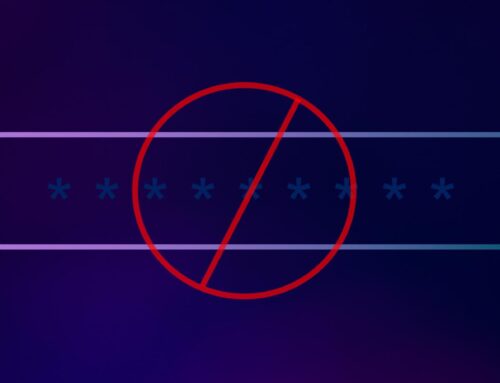Author: Paul Dieubon
In today’s digital age, ensuring robust cybersecurity in healthcare is not just a technical necessity—it’s a cornerstone for maintaining the integrity and trustworthiness of the entire healthcare system. As healthcare organizations increasingly rely on complex digital systems to manage sensitive patient data, the importance of implementing comprehensive cybersecurity measures cannot be overstated. The evolving risks and high stakes necessitate a strategic approach to cybersecurity that incorporates leading frameworks and governance structures.
Why Cybersecurity is Crucial in Healthcare
-
Protecting Sensitive Patient Data:
Healthcare systems manage vast amounts of Personal Health Information (PHI). A breach of this data can result in severe privacy violations and financial losses. Effective cybersecurity safeguards this information from unauthorized access.
-
Ensuring Patient Safety:
Cyberattacks, such as ransomware, can disrupt access to critical patient data, potentially delaying or compromising treatment. Strong cybersecurity measures ensure data remains secure and accessible.
-
Building Trust and Reputation:
Trust is fundamental in healthcare. Data breaches can damage an organization’s reputation and erode patient confidence. Investing in robust cybersecurity practices helps healthcare providers build and maintain trust.
-
Managing Interconnected Systems:
Modern healthcare relies on interconnected systems, including Electronic Health Records (EHRs) and Internet of Things (IoT) devices. Each connection introduces potential vulnerabilities, making comprehensive security measures essential.
-
Ensuring Operational Continuity:
Healthcare facilities operate around the clock, and IT disruptions can impact patient care and operational efficiency. Cybersecurity measures prevent disruptions, ensuring continuous service delivery.
-
Meeting Regulatory Requirements:
Compliance with regulations like the Health Insurance Portability and Accountability Act (HIPAA) is mandatory for healthcare organizations. Frameworks like NIST 800 assist in meeting these requirements and avoiding penalties.
-
Addressing Emerging Threats:
Cyber threats are constantly evolving, with sophisticated attacks like ransomware becoming more prevalent. A proactive cybersecurity strategy is crucial for staying ahead of these threats.
-
Reducing Financial Risks:
Cyberattacks can be costly, leading to expenses related to data recovery, legal fees, and regulatory fines. Strong cybersecurity measures mitigate these financial risks.
The Role of the NIST Framework
The NIST 800 series provides comprehensive guidelines and best practices designed to enhance cybersecurity across various sectors, including healthcare. The NIST Cybersecurity Framework (NIST CSF) offers a structured approach to managing and reducing cybersecurity risks. Its key components—Identify, Protect, Detect, Respond, and Recover—help healthcare organizations develop a robust security posture.
-
Structured Approach:
NIST CSF offers a clear, organized method for identifying risks, implementing protective measures, and responding to incidents, simplifying the enhancement of cybersecurity.
-
Customizable Solutions:
The CSF framework is adaptable, allowing healthcare organizations to tailor security measures to their specific needs, ensuring both effectiveness and applicability.
-
Continuous Improvement:
NIST emphasizes ongoing monitoring and improvement, enabling healthcare organizations to adapt to evolving threats and maintain high security levels over time.
How HIPAA and NIST Complement Each Other
-
Regulatory vs. Framework-Based Approach:
HIPAA is a federal regulation mandating specific requirements for safeguarding Protected Health Information (PHI). It establishes legal obligations for healthcare organizations, focusing on privacy and security through rules like the Privacy Rule and the Security Rule. The NIST 800 series, including NIST Special Publication 800-53 and the Cybersecurity Framework (CSF), offers a set of guidelines, best practices, and standards for managing cybersecurity risks. It provides a comprehensive, flexible approach to cybersecurity that can be tailored to healthcare sector needs.
-
Security Control Mapping:
HIPAA specifies administrative, physical, and technical safeguards for protecting electronic PHI (ePHI), including access control, audit controls, and transmission security. NIST 800-53 and the CSF encompass a broad range of controls that align with HIPAA requirements. For example, NIST’s access control (AC) and audit and accountability (AU) controls correspond to HIPAA’s requirements for access controls and audit logs.
-
Risk Management Integration:
HIPAA mandates risk analysis to identify and address security vulnerabilities. NIST’s Risk Management Framework (RMF) provides a structured risk management process, supporting HIPAA’s risk analysis requirements by helping identify, assess, and mitigate risks comprehensively.
-
Compliance and Best Practices:
HIPAA ensures adherence to legal standards for protecting patient data. Compliance with HIPAA is mandatory, while NIST 800 Framework offers best practices and guidelines that enhance overall cybersecurity posture beyond legal compliance. Following NIST guidelines, although not legally required, helps exceed the baseline protections established by HIPAA.
-
Continuous Improvement:
While HIPAA focuses on compliance, NIST promotes an iterative approach to cybersecurity, encouraging regular assessment and improvement. This supports HIPAA’s requirement for frequent updates to security measures and practices.
Integrating HIPAA’s compliance requirements with the NIST framework’s best practices and risk management approach allows healthcare organizations to not only meet regulatory obligations but also enhance their overall cybersecurity posture. For instance, implementing NIST’s encryption standards (SC-12) can help ensure compliance with HIPAA’s data transmission security requirements.
The Importance of a Governance, Risk, and Compliance (GRC) Department
A well-established GRC department is essential for integrating cybersecurity with organizational strategy. Key benefits include:
-
Centralized Management:
Streamlines governance, risk management, and compliance efforts.
-
Holistic Risk Management:
Oversees comprehensive risk assessment and mitigation.
-
Proactive Risk Identification:
Identifies and addresses potential risks before they escalate.
-
Regulatory Oversight:
Ensures ongoing compliance with regulations, minimizing the risk of non-compliance.
-
Policy Development and Enforcement:
Develops and enforces security policies consistently across the organization.
-
Strategic Alignment:
Aligns cybersecurity efforts with broader organizational goals.
-
Enhanced Coordination:
Integrates various aspects of governance and risk management for efficient operations.
-
Continuous Improvement:
Regularly updates policies to adapt to new threats.
-
Strategic Decision-Making:
Supports informed decision-making.
-
Building Trust:
Demonstrates commitment to ethical practices and effective risk management.
In a healthcare environment where data sensitivity and operational continuity are paramount, cybersecurity transcends technical measures to become a strategic necessity. By integrating HIPAA’s regulatory requirements with the NIST 800 framework’s guidelines, healthcare organizations can ensure regulatory adherence and bolster their cybersecurity defenses. Establishing a robust GRC department further enhances this effort, providing a proactive and well-structured approach to managing evolving cyber threats and maintaining the integrity of the healthcare system.





